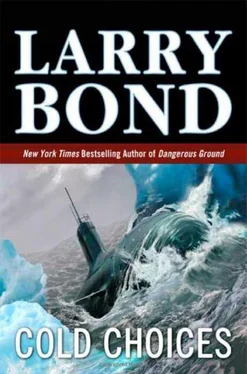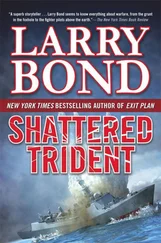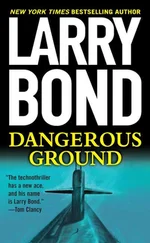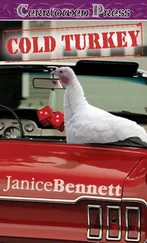Captain Rudel stayed in control until after the watch had turned over, then headed aft toward his stateroom. The XO followed, announcing “Briefing at 1300” before he left. It was only a reminder. Not only had the briefing been part of the plan of the day, but out of the 130 men aboard, only a handful, Jerry included, knew the details of the boat’s destination and mission. There was more than a little curiosity.
With the maneuvering watch secured, Jerry returned to his stateroom and got busy collecting his briefing materials. He was providing the visual aids, as the XO put it, for the briefing to the CO and the rest of the wardroom.
Wardroom, USS Seawolf
Lieutenant Commander Shimko finished presenting Seawolf’s planned track. “And here’s the part we all like. Course two seven zero, then two two five. West and southwest to home. Total voyage time seven weeks, two days, and change. All things considered, a fairly short northern run.”
The packed wardroom held thirteen of Seawolf’s fifteen officers, along with Master Chief Hess, the chief of the boat. Lieutenant Commander Lavoie, the sub’s engineer, had the watch in control while Lieutenant (j.g.) Todd Williams, the ship’s damage control assistant, was back in maneuvering. When the wardroom was used for meals, the officers would eat in two shifts, and it was still a tight fit. With the space this full, everyone kept their elbows pulled in. Jerry had a little more space up front, because he had to handle the charts.
It had taken only fifteen minutes for the XO to lay out their planned course and describe their mission. Shimko didn’t waste words. He expected a routine transit, a smooth mission, and a speedy return home.
“Mr. Mitchell.” He turned to Jerry. “This is a very packed mission plan. Can you keep us on schedule?”
Jerry caught the XO’s tone. “Well, sir, there’s construction on the turnpike. If we take the bypass. ”
Everyone laughed, a comfortable joke among officers comfortable with each other and pleased with their new assignment.
Shimko announced, “Our torpedo officer will now describe exactly how the UUVs will be used on this op.”
Lieutenant (j.g.) Palmer, standing near the doorway, pulled some notes out of his shirt pocket. He didn’t try to move from where he stood.
He unfolded the notes and paused for a moment. “The vehicles we are carrying are prototypes of the Advanced Development UUVs. They have high-frequency imaging sonars and precision underwater mapping software. The high-resolution imaging sonar will allow us to collect precise bottom bathymetric data. There is also a special camera module that can take seven-megapixel digital photos of the bottom or anything interesting that it comes across.
“Each UUV is fitted with a GPS and inertial navigation system, and they’re smart enough to follow complex instructions. Seawolf will get in range of an ‘area of interest,’ typically about five nautical miles. We will launch one of the three vehicles — Maxine, Patty, or LaVerne.” Those who hadn’t heard the three names before, but understood the reference, smiled or chuckled; Palmer didn’t pause. “Each has an endurance of about sixty hours, but we expect each mission to take no more than forty-five, allowing a fifteen-hour margin.
“We can communicate with one acoustically within seven nautical miles, or by SATCOM, which gives us the flexibility to be much farther away. We can preset times when a UUV will come up to a shallow depth, find a safe hole in the sea ice, and listen for instructions. It can also use the same procedure to take its own GPS fixes.
“We won’t be able to see what a UUV has found until it returns to the boat. The imaging sonar returns almost photographic-quality images, but the acoustic modem would choke on that much data. We’ll download the detailed bottom data after the UUV is recovered. Instead, we’ll get basic data — a usable picture of the bottom, position, course and speed, and so on, as long as we’re within that seven-mile acoustic comms range.
“When a UUV completes a mission and returns to the boat, it will need about two hours’ maintenance. Basically, while we’re sending one out, one will be running a survey, and we’ll be servicing or recovering the third. We don’t charge the lithium-thionyl-chloride batteries on these UUVs. The energy sections are completely replaced. That shortens our turnaround time.”
The XO asked, “Questions?”
“Sir, what if we have problems with the UUVs?” Lieutenant Will Hayes was main propulsion assistant. The engineering department would not be directly concerned with survey operations, but it was an honest question.
Shimko looked to Palmer. The torpedo officer only paused for a moment. “Losing a vehicle would be bad, but would only cost us one or two sorties at the very most. And those could be made up if we stayed on station a little longer. The consumables can be used by any of the three vehicles. We’ve loaded the top starboard torpedo tube with the mechanical arm that recovers the UUVs. We can use any of the three other starboard tubes for actually launching or recovering them. I’ve laid in extra repair parts for the arm, the control console, and the handling equipment. Barring a catastrophe, we can fix all the gear underway.”
Hayes and everyone else seemed satisfied by Palmer’s answer.
Chandler then raised his hand. “Sir, if we’re doing this after the Russian training exercises are done for the year, why did we embark CTs and the ACINT riders?” The cryptological techs were enlisted men who were experts in electronic eavesdropping and would be spending a lot of time in the radio room and the ESM bay. Most could speak Russian, several were fluent in a couple of languages. Given their skill level, they were dramatically underpaid. The acoustic intelligence riders were hypertrained sonar technicians who would assist Seawolf’s own sonar shop.
Boats on intelligence-collection missions near foreign waters routinely carried CTs and ACINT specialists to actually gather signals and acoustic intelligence data and advise the captain on procedures and the conduct of the mission. They usually kept to themselves, and submariners had learned that “the riders” never talked shop.
The XO answered this question. “They’re aboard because we can’t be sure the Russians will do what they’ve done in the past. We will be monitoring their transmissions, if there are any. And since we’re looking at the seabed, we may find expended weapons or other materiel and if there are any markings, I’d like to know what they say.” He paused for a moment. “Although our ordered mission is to conduct precise bottom surveys, we will always use every opportunity to gather useful intelligence. Confucius says, ‘Man who search at night better use long candle.’”
While everyone laughed, the captain stood up. He nodded toward Ensign Santana, who turned on the ship’s announcing circuit and handed the microphone to Rudel.
“Attention, all hands. This is the Captain. Before we sailed, you were all told our mission would be up north, and would last just over seven weeks. Here’s the rest of it. After transiting to the Barents Sea, we will be surveying parts of the seabed there. We will also aggressively collect any intelligence we can on Russian naval operations. In the course of your work, you may learn more details about our mission. Do not discuss what you learn with other members of the crew or anyone off the boat without my express permission.
“Our work will involve using the three prototype UUVs we are carrying. As it is early fall up there, we will spend most of our time under sea ice. None of this will be any more unusual or hazardous than our typical hair-raising exploits. All we have to do is work our tails off, get the job done, and then we’ll return home quickly and safely. That is all.”
Читать дальше












